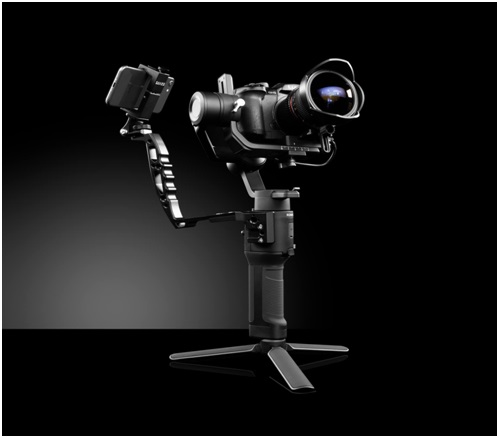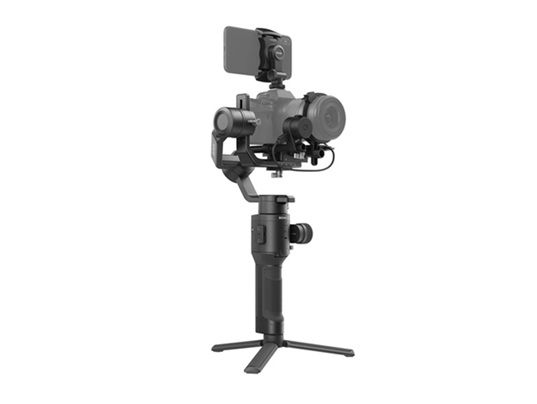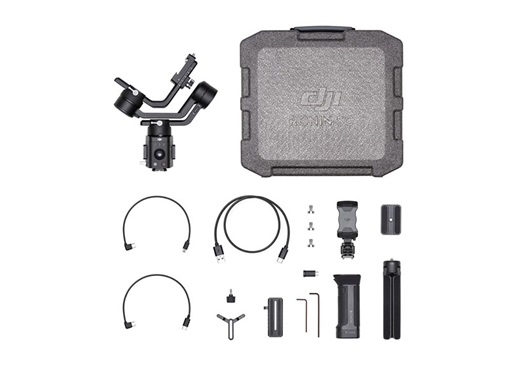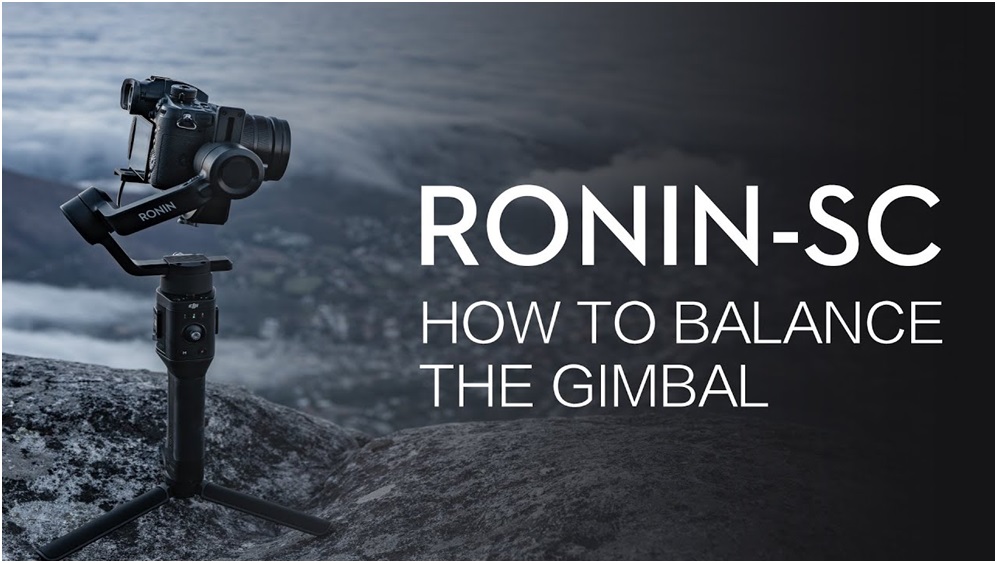The Ronin-SC is a single-handed 3-axis gimbal explicitly designed to be used with mirrorless cameras. The gimbal is a follow-up to DJI’s popular Ronin-SC gimbal but features a simplified design that is easier to travel with, set up and shoot with.
The Ronin-SC is made of magnesium, steel, aluminium and composite plastic and has a battery that can last for up to 11 hours. We had a chance to check the Ronin-SC out before launch. Here’s what you need to know about it.
DJI Ronin-SC Compact Design
The Ronin-SC is built to go anywhere. Robust performance and high-strength materials like magnesium and aluminium along with high-strength composite materials, makes it only 1.1 kg. The modular and quick setup design ensures the Ronin-SC can pack down in limited spaces and be carried with ease. The buttons and trigger are easy to reach, and a flared battery grip makes extended holding easy.
Axis locks on each arm make carrying the gimbal a breeze and help with individual axis balancing. The Quick-Release Plate includes a positioning block for the camera position allowing instant remounting.

Lighter, Smarter, Better.
The Ronin-SC is 41% lighter than the Ronin-S, weighing only 2.4 lbs. (1.09kg). It uses a mix of magnesium, steel, aluminium and composite plastic, and, thankfully, it doesn’t feel cheap, according to our hands-on time with it.
DJI has engineered its new gimbal to support a 4.4 lbs. (1.99kg), touting its “powerful high-grade motors.” The company said it’d go into more detail about which cameras support the gimbal, given all of the different camera configurations out there. Weight can vary due to lenses and batteries attached.
The Ronin-SC has a built-in battery that offers up to 11 hours of operation, according to DJI, with USB-C onboard to recharge the gimbal from the base quickly. That’s going to be more than enough for more people if it truly lasts that long.
Performance

During filming, the time setting seems to be the most time-consuming part of the day. For one reason or another, it looks like it takes two or three attempts to achieve the perfect balance, rather than 35 mm.
When the lens is moving fast, the performance of a smaller lens is very good, comparable to that of a larger ronin-sc lens, but with 24-70 lenses and a focal length of 50mm, sometimes the balance is perfect, and sometimes not.
The process of elimination and adjustment will eventually strike the right balance, but even then, ronin-sc will be shaken if a mobile phone adapter is installed.
Finally, I abandoned the ronin-sc, with no additional mobile phone adapter except for a fixed focal length lens or zoom lens.
With the addition of 35 mm, ronin-sc’s performance is excellent, and the combination of lightweight and agility through Ronin application features such as ActiveTrack makes this particularly easy and useful.
In terms of video work, the new model’s smaller, lighter picture frame has an advantage, and the features added to the Ronin app have greatly enhanced both models since the initial ronin-sc release.
Like ronin-s, there are focus wheels on the side, and once the camera is fully connected and set up, you can use manual focus while stabilizing the lens, which makes a big difference in the professional look and style of the lens.
However, ronin-sc is tempting, and if I lie to ronin-sc that my arm doesn’t feel like it’s going to fall off at the end of the day, I do make the older man’s voice complain about the pain in my arm after a good week. However, ronin-sc is excellent, and SC is not behind.
Ronin SC is a smart solution that, due to its compact size, will slide into my backpack with other kits without too much trouble, which is a big bonus for me.
Ronin-SC is an outstanding suite that improves the quality of your video footage with rapid response times and fluid movement that is significant.
The question of balance I can boil down to time and device experience, learning the Settings required for each lens, camera combination, and whether you want a mobile phone adapter.
If you use purely mirrorless cameras, the ronin-sc is the best quality one-handeded cradle stabilizer on the market. While the balance setup can be tricky for some lenses, it can work with other stabilizers of this size and payload.

If you do not own a Ronin-SC now, I strongly recommend you to visit your local D1 STORE to get more advice or feel free to contact D1 store online.




